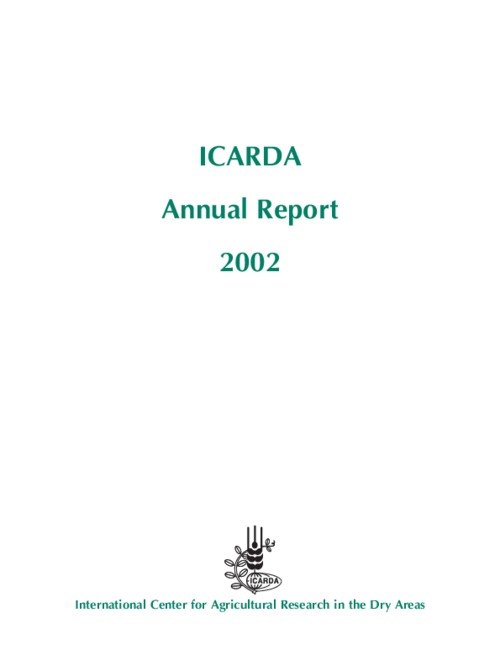Verificatie kwaliteit BRP gegevensbank
De Dienst Basisregistraties (DBR) is verantwoordelijk voor het beheer en onderhoud van de basisregistratie percelen (BRP). DBR heeft Alterra gevraagd een kwaliteitsonderzoek uit te voeren naar de kwaliteitsaspecten juistheid, nauwkeurigheid, tijdigheid en volledigheid van de BRP. Het kwaliteitsonderzoek is uitgevoerd in zeven deelonderzoeken. Verificatie van de kwaliteit heeft plaatsgevonden op basis van veldbezoek, dossieronderzoek en vergelijking met beschikbare referentiebestanden.
IMRO in de groene ruimte: mogelijkheden en beperkingen
In opdracht van het ministerie van LNV wordt onderzocht wat de bruikbaarheid en uitbreidingsmogelijkheden van het informatiemodel van de ruimtelijke ordening (IMRO) zijn voor het vastleggen en uitwisselen van ruimtelijke plannen die betrekking hebben op de groene ruimte. Uit de probleemanalyse blijkt dat IMRO niet geheel toereikend is en dat er een aantal knelpunten bestaat. Vervolgens worden suggesties gedaan om deze problemen op te lossen. Als oplossing voor een aantal problemen wordt het GeneriekeRuimtelijke Informatiemodel (GRIM) gesuggereerd.
Picturing planning perspectives. Understanding implementation of geographical information systems for land use planning and regulation in the Costa Rican State
Historisch grondgebruik Nederland: grondgebruik rond 1970 in 500 meter grids
Voor toepassing in landelijke modellen bij het Milieuplanbureau is voor de periode rond 1970 een GIS-bestand met grondgebruik ontwikkeld met een resolutie van 500-metergrids. De basisgegevens hiervoor zijn ontleend aan de topografische kaarten die rond 1970 zijn verschenen. Met een automatische classificatie zijn kaartkleuren omgezet naar tien legenda-eenheden. Onderscheiden zijn akker, gras, heide en hoogveen, bos, bebouwd gebied en wegen, zoet en zout water, kassen, vliegvelden en kale grond. Het resultaat is een landsdekkend bestand van Nederland met dominant grondgebruik rond 1970.
Historisch grondgebruik Nederland: tijdreeksen grondgebruik Noord-Holland van 1850 tot 1980
Voor de periode 1850-1980 zijn voor de provincie Noord-Holland ruimtelijke gegevensbestanden ontwikkeld met het historisch grondgebruik. De basisgegevens hiervoor zijn ontleend aan landsdekkende topografische kaarten die vanaf 1850 zijn verschenen. Erzijn vijf tijdstappen onderscheiden: 1850, 1900, 1930, 1960 en 1980. Deze kaarten zijn gescand en geometrisch gecorrigeerd naar het RD-stelsel. Met een semi-automatische classificatie zijn van de gescande kaarten de kleuren omgezet naar tien klassen met grondgebruik.
Spatial analysis of soil fertility management using integrated household and GIS data from smallholder Kenyan farms
Although soil fertility is recognized as a primary constraint to agricultural production in developing countries, use of fertilizer in Sub-Saharan Africa is declining. Smallholder farmers still rely heavily on livestock manure for soil fertility management. To explore the determinants of soil fertility management practices, including both the use of cattle manure and inorganic fertilizer, data are used from a sample of 3,330 geo-referenced farm households across Central and Western Kenya. A bivariate probit model is applied to jointly examine the use of the two technologies.
Spatial analysis of soil fertility management using integrated household and GIS data from smallholder Kenyan farms
Although soil fertility is recognized as a primary constraint to agricultural production in developing countries, use of fertilizer in Sub-Saharan Africa is declining. Smallholder farmers still rely heavily on livestock manure for soil fertility management. To explore the determinants of soil fertility management practices, including both the use of cattle manure and inorganic fertilizer, data are used from a sample of 3,330 geo-referenced farm households across Central and Western Kenya. A bivariate probit model is applied to jointly examine the use of the two technologies.
ICARDA Annual Report 2002
The year 2002 marked ICARDA's 25th anniversary, and coincided with several honors and awards for the center's excellence in research. Research on developing high-yielding kabuli chickpea varieties that thrive in cool, wet winter conditions earned the 2002 King Baudouin Award of the Consultative Group on International Agricultural Research (CGIAR), jointly with the International Crops Research Institute for the Semi-Arid Tropics (ICRISAT), which focuses on desi chickpea.
Mise au point d' un modele cartographique pour la description des stations forestieres en Ardenne belge
Development of a cartographic mdel for the forest site types delineation in the Belgian Ardenne. The paper presents an original method dealing with the forest site types delineation. The suggested method consists in integrating a typological key in a GIS aiming at producing a thematic map that describes forest site types. Data used are the soil map of Belgium (digitized at the scale 1:20,000) and a digital elevation model built from a topographic map (scale 1:10,000). The typological key is mainly based on the methodology used by Thill et al.
Mise au point d' un modele cartographique pour la description des stations forestieres en Ardenne belge
Development of a cartographic mdel for the forest site types delineation in the Belgian Ardenne. The paper presents an original method dealing with the forest site types delineation. The suggested method consists in integrating a typological key in a GIS aiming at producing a thematic map that describes forest site types. Data used are the soil map of Belgium (digitized at the scale 1:20,000) and a digital elevation model built from a topographic map (scale 1:10,000). The typological key is mainly based on the methodology used by Thill et al.






